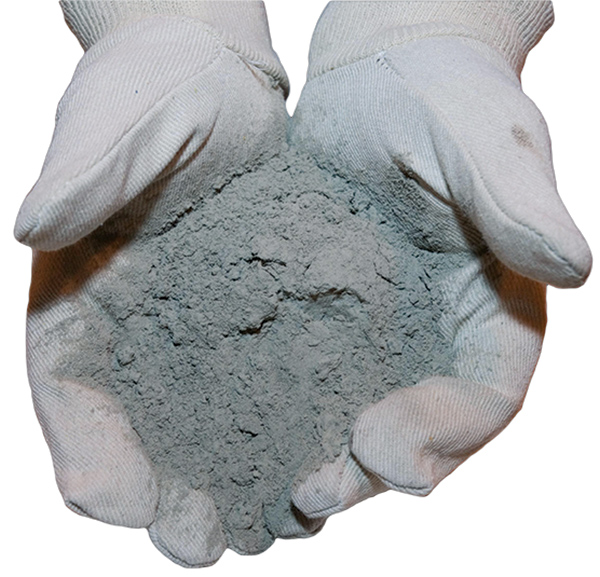Reasons and Suggestions of Fly Ash and Slag Affecting Concrete Carbonization

In the 1950s and 1960s, mineral admixtures were often used as a kind of “waste”, the main purpose was to save cement and reduce costs; in the 1970s and 1980s, a large number of powders were used in dam concrete. The main purpose of coal ash is no longer simply to save cement, but to reduce the heat of hydration; since the 1990s, with the deepening of the research and application of high-strength and high-performance concrete, many properties of concrete can be obtained by adding a certain amount of minerals. Admixtures are improved. Until now, mineral admixtures are no longer in the form of “waste”, but are used as a necessary material to improve the performance of concrete. Since the carbonation problem of admixture concrete is complex and has many influencing factors, it is of great significance to carry out research on the law of concrete carbonation for the popularization and application in practical engineering and the durability evaluation of admixture concrete structure.
Carbonation mechanism of concrete
Carbonation of concrete means that in the natural environment, CO2 gas in the air continuously diffuses into the capillary pores inside the concrete to neutralize the Ca(OH)2 dissolved in the pore liquid to generate carbonate or other substances. chemical phenomenon. The products after cement hydration are calcium hydroxide, hydrated calcium silicate, hydrated calcium aluminate, hydrated calcium sulfoaluminate, etc., which have stable pH values.
The pore water of concrete is calcium hydroxide saturated solution, and its pH value is about 12-13, which is strongly alkaline. In the presence of water, these substances will react with CO2 gas, and the reaction process is as follows:
CO2+ H2O → H2CO3
Ca(OH)2+ H2CO3→ CaCO3+ 2H2O
C2S2H3+ 3H2CO3→ 3CaCO3+ 2SiO2+ 6H2O
2 Factors affecting the carbonation performance of concrete
2.1 Material factors
The effect of water-to-binder ratio.
The effect of admixtures.
The effect of single mixed slag on carbonization.
Effect of compound fly ash and slag powder on carbonization.
The carbonation depth of concrete increases with the increase of the total content of fly ash and slag. When the total content remains unchanged, with the increase of the proportion of fly ash, the content of slag decreases, and the carbonization depth of concrete increases. And there is an optimal mixing ratio of the two, which makes the carbonization resistance of concrete the best. But so far, the blending ratio of fly ash and slag has not been clearly defined.
2.2 Environmental factors
Environmental factors include the natural environment and the use environment. The natural environment includes relative humidity, temperature, stress, and carbon dioxide concentration. The use environment mainly refers to the stress state and stress level of concrete components, which mainly affect the diffusion rate of carbon dioxide and carbonization. The reaction rate affects the carbonation rate of concrete.
2.3 Construction Factors
Construction factors mainly refer to the mixing, vibrating and curing conditions of concrete, which mainly affect the carbonization rate of concrete by affecting the compactness of concrete. The actual investigation results show that under the same conditions, the better the construction quality, the higher the concrete strength, the better the compactness, and the stronger the carbonization resistance; the poor construction quality, due to factors such as internal cracks, honeycombs and holes in the concrete increase carbon dioxide. Diffusion path in concrete, which accelerates carbonization. Similarly, the difference in curing method and age will also cause differences in compactness and carbonizable substances, which will have different effects on the carbonization rate.
3 Concrete carbonation treatment and improvement measures
If the carbonization depth is too large, the steel bars are corroded obviously, and the components that endanger the structural safety should be demolished and rebuilt. If the carbonization depth is small and less than the thickness of the steel protective layer, and the carbonized layer is relatively hard, it can be sealed with high-quality paint; for the carbonization depth greater than the thickness of the steel protective layer or the carbonization depth is small but the carbonized layer is loose and peeled off, the carbonized layer should be removed. Paint high-strength mortar or pour high-strength concrete. If the steel bar is seriously corroded, the rust should be removed before repairing, and the reinforcing bar should be added according to the corrosion situation and structural needs, so as to prevent or slow down the entry of harmful gases from the outside into the concrete as much as possible, so that the interior and the steel bar are always in a highly alkaline environment. middle. Several carbonization treatment methods such as epoxy high-build coating, silica fume mortar, and concrete joint surface treatment are often used in practical projects.
In view of the factors that affect the carbonization of concrete, the improvement measures are generally proposed: reasonable design of concrete mix ratio, use of mechanical vibration, surface treatment with paint or other measures, selection of low-permeability and dense aggregate, and increasing the thickness of concrete protective layer, etc.
To sum up, concrete carbonation is an extremely important part of concrete durability research. This paper reviews the carbonation mechanism, influencing factors and improvement measures of mineral admixture concrete. There are many factors that cause concrete carbonation. This paper mainly discusses the influence of water-binder ratio and the content of fly ash and slag, and briefly introduces the treatment and improvement measures of concrete carbonation.
